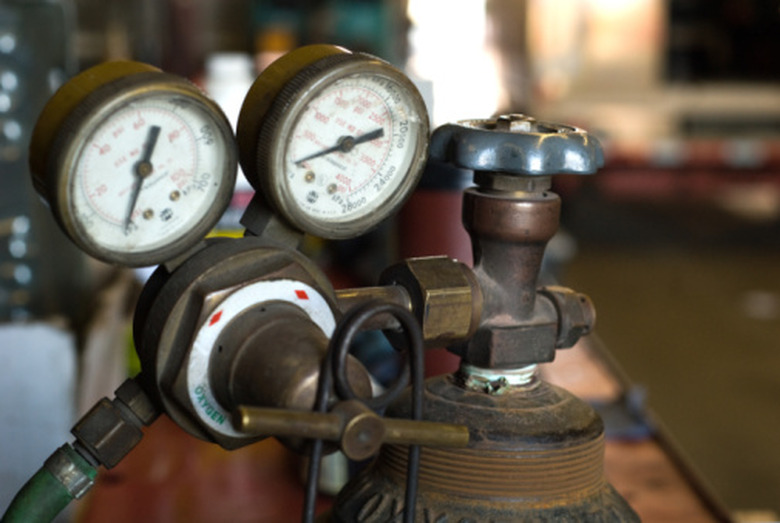How To Size Pressure Relief Valves
Pressure relief valves are a critical component of any pressurized system. Often considered in applications of pressurized steam, pressurized systems are common throughout many chemical manufacturing and refining processes as well. One of the greatest concerns in a pressurized system is of a buildup of pressure, whether rapid or over time, to the point that there is an explosive failure in the system. A failure not only can hamper production and require costly repairs, but is a significant health and safety risk to any workers. A pressure relief valve is the primary safety mechanism for a pressurized system.
Step 1
Determine the system's maximum allowable working pressure (MAWP). When determining this value, consider the weakest component of the system. The component that will fail at the lowest pressure among all of the parts of the system will lead towards the MAWP. Components can include, but are not limited to; pipes, boilers, pumps, valves, other pressure vessels and gauges.
Step 2
Compare the weakest link in the system and the required operating pressure of the system. It is important that the pressure rating of the weakest component be significantly above the required pressure of the system. Typically a safety factor of at least 25 percent is required.
Step 3
Select the valve's pressure setting based on the required operational system pressure and guidelines specific to the industry in which the system operates. For example, the American Petroleum Institute Recommended Practice 520 (API RP 520) is the standard guideline for oil and gas industries, along with many others in the chemical industries. In many cases, the greater of 3 psi or 10 percent above MAWP is a standard safety valve setting.
Step 4
Size the valve's orifice based on the the accepted industry sizing table. Orifice sizes run from 0.11 square inches to 26 square inches. The proper orifice size code can be garnered from a manufacturer's capacity table. The capacity table gives the correlation between the pressure setting of the relief valve and the operating load of the system in which the manufacturer's equipment is being used. The orifice size is important as it determines how rapidly the pressurized material is allowed to escape from the system. If the pressurized material of the system is vented quickly enough to lower the system's overall pressure faster than it is increasing, a catastrophic failure may occur.
Warning
Working with pressurized systems can be very hazardous. Catastrophic failure can result in injury or death. A qualified engineer must participate in the proper selection of a pressure relief valve. API, OSHA, and ASME standards for equipment and procedures need to be taken into account, among others.
Cite This Article
MLA
Rytting, Michael. "How To Size Pressure Relief Valves" sciencing.com, https://www.sciencing.com/how-8004707-size-pressure-relief-valves/. 7 August 2017.
APA
Rytting, Michael. (2017, August 7). How To Size Pressure Relief Valves. sciencing.com. Retrieved from https://www.sciencing.com/how-8004707-size-pressure-relief-valves/
Chicago
Rytting, Michael. How To Size Pressure Relief Valves last modified August 30, 2022. https://www.sciencing.com/how-8004707-size-pressure-relief-valves/
